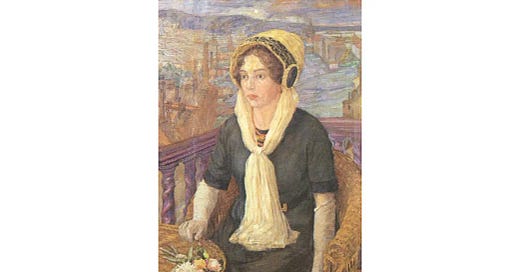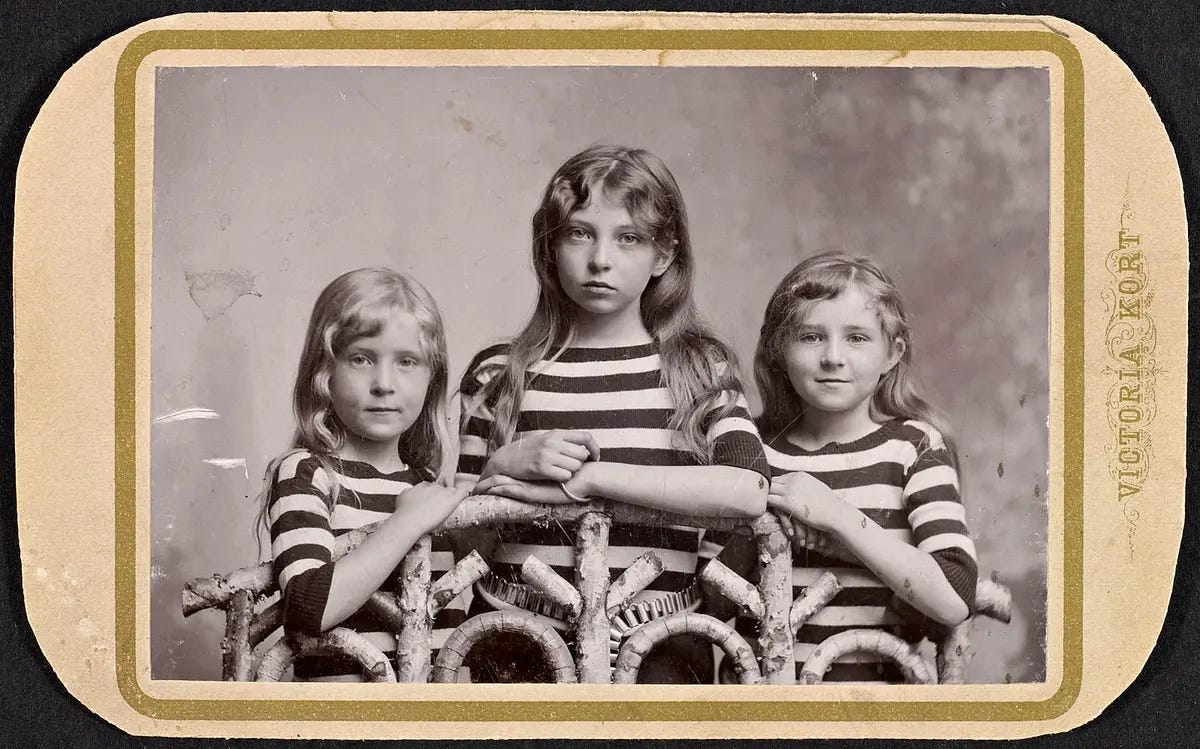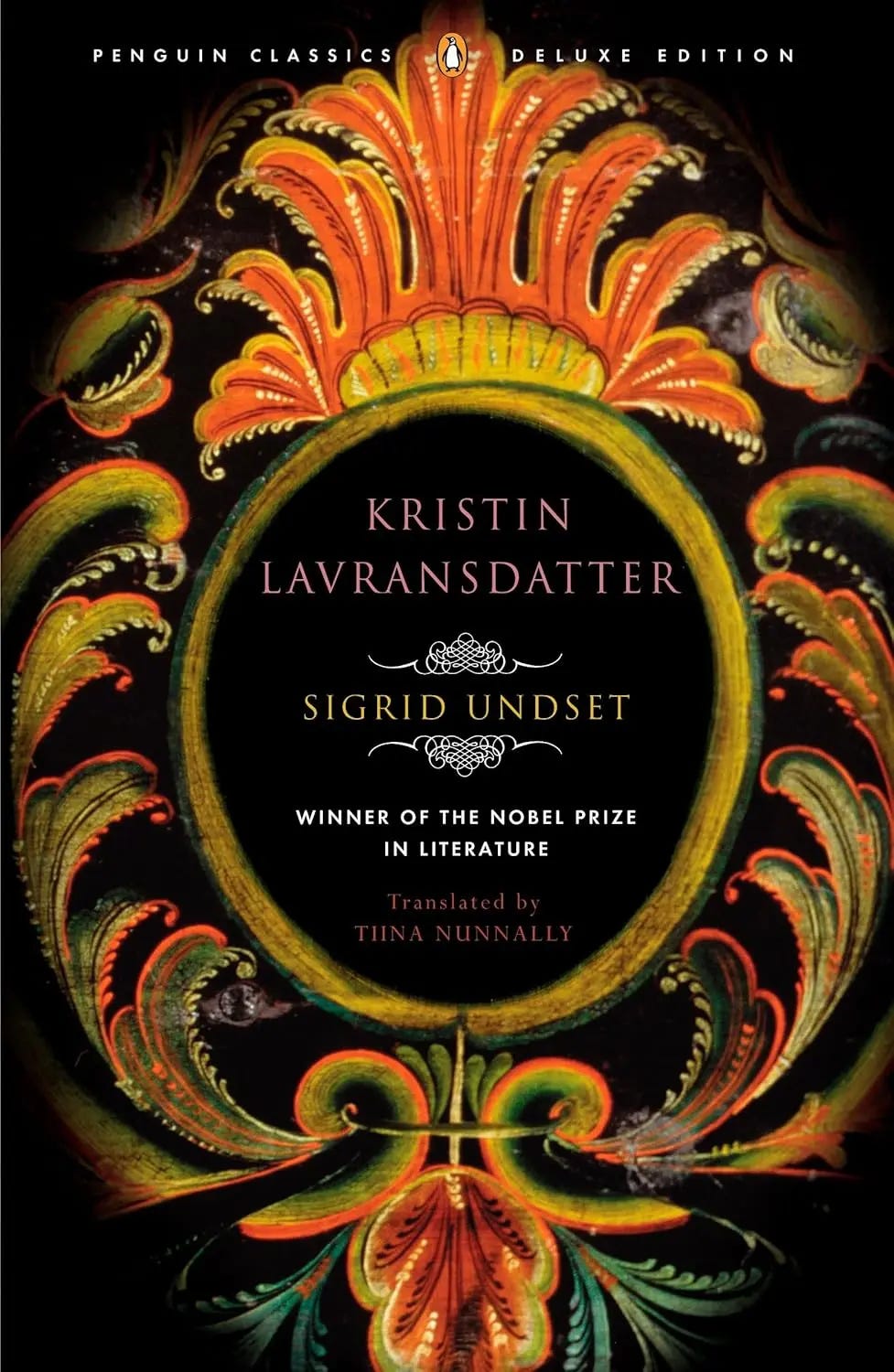Sigrid Undset was arguably the most successful female writer of her time, though her work isn’t particularly well-known in the United States. The Norwegian novelist wrote historical novels set in medieval Norway that find a delicate and absorbing balance between sweeping scope and psychological intimacy.
Undset rose to the pinnacle of her art form through long labor and painful personal trials. Her skill eventually garnered worldwide recognition when she received a Nobel Prize in literature in 1928. She even managed to achieve this peak artistic accomplishment while raising a family, experiencing exile, and working to support the national interests of Norway and Finland during and after World War II.
A Scandinavian Childhood
Sigrid Undset was born on May 20, 1882 in Denmark. Because her father, Ingvald Martin Undset, was an archeologist and historian, Undset grew up in a home steeped in history with manuscripts and artifacts scattered about the house. He had obtained his doctorate the year before Sigrid’s birth with a thesis on “The Beginning of the Iron Age in Northern Europe.”
This environment in the home fired up Sigrid’s imagination. She developed an intimate knowledge of and love for the history of the Middle Ages in Scandinavia. It was so significant, in fact, that it would eventually feature centrally in her most successful novels. Sigrid’s mother, Charlotte, assisted Ingvald with his work as his secretary and illustrator. The Undset children were raised Lutheran due to cultural expectations, although both parents held atheist beliefs.
Undset and her two sisters were sent to a progressive school run by a Mrs. Nielsen. In an autobiographical note, Undset recalled, “It played an important role in shaping my character, inspiring me with an indelible distrust of enthusiasm for such [progressive] beliefs! It was not that I disliked Mrs. Nielsen or suspected her of not being so noble-minded or attached to her principles as she appeared to be. No, it was those very principles which filled me with boundless scepticism [sic].” Undset’s dislike for the school caused her to roll “up into a tight ball of resistance” and eventually leave the school permanently. She then attended a school in Christiania (now Oslo, Norway).
Undset’s father sent his daughters to school partly because he knew he was dying and wanted them to receive an education that would allow them to support themselves. When he finally passed away in 1893, the family was placed in trying financial circumstances, and Sigrid had to leave school to begin working. Undset took a job as a secretary for an electrical engineering firm in Oslo where she worked from age 17 to 27.
From her teen years, Undset yearned to be a writer. As Brad Leithauser related in his introduction to “Kristin Lavransdatter,” Undset wrote to her friend Andrea Hedberg during her teens, “Sometimes I want so much to write a book. ... I’ve started a few times, but nothing comes of it, and I burn it at once.” And again, “It’s an artist I want to be, a woman artist.”
In between working hours, Undset spent her time reading and writing, trying to make her dream materialize. She completed writing two historical novels set in the Middle Ages during this time. However, with a remarkable lack of perception, an influential editor told her, “Don’t attempt any more historical novels. You have no talent for it. But you might try writing something modern.”
Undset did just that, publishing a contemporary novel, “Marta Oulie,” in 1907. It centered around a woman who is unfaithful to her husband—establishing the themes of romance, marriage, and sexuality that would characterize much of her oeuvre. Several modern novels followed, bringing Undset some degree of success and recognition. However, her magnum opus was still several years off.
Another attempt at historical medieval fiction in 1909 (“Gunnar’s Daughter”) proved more promising than her initial efforts, and earned her a scholarship from the Norwegian Writer’s Association. She used the scholarship to leave her secretary job and travel in Germany and Italy.
An Eventful Life
During Undset’s travels, her life took a fateful turn. While in Italy, she met and fell in love with Norwegian painter Anders Castus Svarstad, who was 13 years older than her, married, and the father of three children. Svarstad eventually divorced his wife and married Undset in 1912. They had three children together.
Undset’s relationship with Svarstad was not to last, however, and the couple separated in 1919, leaving Undset to raise six children—including three from her husband’s previous marriage that she willingly took in when their parents would not. Two of the six children she raised were severely mentally handicapped. With characteristic fortitude, Undset managed to pen her greatest works while caring for this brood.
In her forthright manner, Undset said of her time with Svarstad, “Well, our marriage did not turn out a success,—he had a gift for making other people, and himself, unhappy, and to turn friends and admirers into enemies, which did much to prevent him from being recognized as the great artist he really was, as long as he was living.”
Undset’s tumultuous love affair, experience writing both modern and historical fiction, and continued devotion to a faded historical past flowed together into a powerful creative coalescence. The result would be what many consider her masterpiece. “Kristin Lavransdatter,” a trilogy of love, violence, and spiritual pilgrimage, was set in medieval Norway and published from 1920–1922.
The plot begins when a young woman follows her heart into an ill-advised love affair with a man who has already fathered children by another woman. Though Kristin and her lover, Erlend Nikulausson, eventually marry, Kristin soon discovers that having a thrilling tryst with Erlend is one thing, while being married to him is another—and much harder—thing.
Kristin Lavransdatter’s story echoed Undset’s own experience. As English professor Mitzi Brunsdale wrote, “Beyond setting, characterizations, and style, however, Sigrid Undset’s literary achievement derives from her early realization of the somber truth of human life: If we want something, we must pay for it, and as the Old Norse sagas relentlessly insist, once the thrill of the chase and the joy of the prize are gone, the price often seems too high.”
This “high price,” the burdens of married life and the disappointments of a love that fell short of expectations, led both Sigrid Undset and her fictional heroine Kristin Lavransdatter to look hard at the yearning of the human heart and the spiritual dimension of being human. Often, as Shakespeare’s Helena says in “A Midsummer Night’s Dream,” “My legs can keep no pace with my desires.”
It was this spiritual searching—along with her deep submergence in the pre-Reformation world of her novels—that led Undset to convert to Catholicism in 1924. After her conversion to Catholicism, Undset’s marriage was annulled. She later became a Third Order Dominican, a title for a lay person who takes on some of the responsibilities and privileges of the religious order. Her later works flow from her conversion and are more directly religious in nature, mostly written to defend and promote her newfound faith and counter what she saw as modern errors.
Her Work Recognized
“Kristin Lavransdatter” was followed up by another historical series of novels, “Olav Audunsson,” published between 1925 and 1927. Chiefly because of her magnificent novels about medieval Norway that bring to life equally a far-off time and the timeless workings of the human heart, Sigrid Undset received the Nobel Prize in Literature in 1928.
Of Undset’s work, Per Hallström said in the award ceremony speech,
“Intimately combined with the consciousness of the nation, in her depiction, honour retains all the rigour and all the weight that it had for the chevaliers and great landowners of the fourteenth century. The demands of honour are clearly stated, and the conflicts it creates are worked out regardless of their brutal consequences. Religious life is described with startling truth. Under Sigrid Undset’s pen it does not become a continuous holiday of the mind, penetrating and dominating human nature; it remains, as in our day, insecure and rebellious, and is often even harsher.”
According to Leithauser, Undset donated all of her Nobel Prize money to charity and later sold her Nobel medallion to raise money for Finnish children in need when the Soviets invaded. WWII drove Undset from Norway to the United States, and her concern for the welfare of the people of Scandinavia prompted her to speak and write in support of her country during its Nazi occupation. The war damaged not just her country but also her family: Her eldest son was killed in action in 1940.
Undset returned to her home in Norway in 1945. She wrote nothing more after her return to Norway, although a handful of her works were published posthumously. Undset passed away in 1949 at the age of 67.
[This article originally appeared on The Epoch Times: https://www.theepochtimes.com/bright/the-life-of-nobel-prize-winning-novelist-sigrid-undset-5802146]





